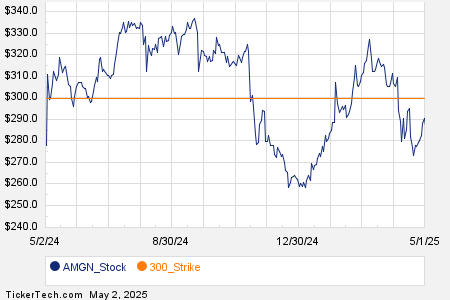Dollar Index Declines Amid Trade Talk Hopes and Job Data
The dollar index (DXY00) fell by -0.73% today. This decline results from decreased safe-haven demand as reports of potential US-China trade talks boosted investor risk appetite, leading to a stock rally. Additionally, the dollar declined after the US average hourly earnings for April came in lower than expected, suggesting a dovish stance for Federal Reserve policy. However, a bright spot for the dollar was the significant rise in US factory orders for March, marking the largest increase in eight months, alongside stronger nonfarm payroll figures for April, indicating labor market resilience that leans hawkish for Fed policy.
Key Employment and Economic Data
In April, US nonfarm payrolls increased by +177,000, exceeding expectations of +138,000. However, March’s numbers were revised downward by 43,000 jobs from +228,000 to +185,000. The unemployment rate for April remained steady at 4.2%, aligned with forecasts.
The US average hourly earnings rose by +0.2% month-over-month and +3.8% year-over-year, slightly below the anticipated +0.3% month-over-month and +3.9% year-over-year increases.
Additionally, US factory orders for March saw a rise of +4.3% month-over-month, the most substantial gain in eight months.
US-China Trade Talks
China’s Commerce Ministry is contemplating the possibility of trade discussions with the US. It stated, “The US has recently sent messages to China through relevant parties, hoping to start trade talks, and we are currently evaluating this.”
Currently, markets anticipate a mere 3% chance of a -25 basis points rate cut following the May 6-7 FOMC meeting, a decrease from the 30% probability noted last week.
Euro Gains on Weaker Dollar
In contrast, the EUR/USD (^EURUSD) rose by +0.61%. The euro received support from a weakening dollar, coupled with positive economic data from the Eurozone. Upward revisions for both the core CPI and S&P manufacturing PMI reports bolstered the euro’s position, alongside an unchanged Eurozone unemployment rate at a record low.
The Eurozone’s April core CPI was adjusted upward to 2.7% year-over-year, up from the reported 2.4%. Additionally, the April S&P manufacturing PMI was revised upward by +0.3 to 49.0 from the previously reported 48.7. The unemployment rate in March remained stable at a historic low of 6.2%.
Swaps currently indicate a 97% probability for a -25 basis points rate cut by the ECB during the June 5 policy meeting.
Yen Strengthens as Treasury Holdings Are Contemplated
The USD/JPY (^USDJPY) decreased by -0.89%. The yen strengthened from a three-week low against the dollar. Light short covering in the yen followed comments from Japanese Finance Minister Kato, who suggested that Japan’s Treasury holdings could play a strategic role in trade negotiations with the US. Selling off some of these Treasury holdings and reallocating back to yen-denominated assets could positively impact the yen.
However, gains in the yen faced limitations as March’s jobless rate unexpectedly increased by +0.1 to 2.5%, indicating a weaker labor market than anticipated. Moreover, today’s rally in the Nikkei Stock Index to a five-week high has reduced the yen’s safe-haven appeal. Rising T-note yields further constrained the yen’s recovery.
Mixed Precious Metals Markets
In precious metals, June gold (GCM25) increased by +36.60 (+1.14%), whereas July silver (SIN25) fell by -0.094 (-0.29%). The weaker dollar today contributed to moderate gains in precious metals. However, a reduction in safe-haven demand as hopes for US-China trade thawing grow has limited these gains. The geopolitical risks in the Middle East, including the Israel-Hamas conflict and the US-Houthi tensions, continue to support precious metals prices.
Silver prices received a boost from positive global economic data, including the stronger-than-expected US nonfarm payrolls and significant gains in March factory orders. Additionally, the upward revision of the Eurozone April S&P manufacturing PMI underpins demand for industrial metals.
On the date of publication, Rich Asplund did not have (either directly or indirectly) positions in any of the securities mentioned in this article. All information and data in this article are solely for informational purposes. For more information, please view the Barchart Disclosure Policy
here.
More news from Barchart
The views and opinions expressed herein are the views and opinions of the author and do not necessarily reflect those of Nasdaq, Inc.
